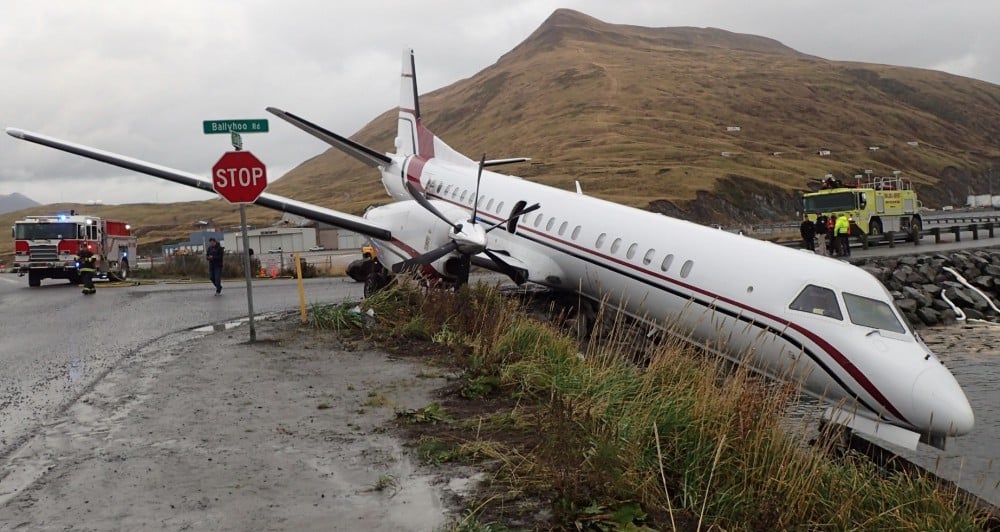(Note: This article was originally published on November 17, 2022).
The Transportation Safety Board of Canada (TSB) released its annual safety watchlist late last month. If you want to see the full list, I’ve included a link here: Watchlist 2022.
The TSB, like the safety boards of many nations, is responsible for advancing the safety of all modes of travel, not just aviation. So, there was quite a bit of competition from the likes of rail, marine and pipeline to make this particular list.
That makes it even more frustrating that Aircraft Runway Overruns continue to make the list, year after year.
Of course, this watchlist is only intended for Canada; however, the concern for Runway Overruns or Runway Excursions is certainly not limited to Canada. In fact, the Unstable Approach (arguably a major cause of Runway Excursions) continues to be the Number 1 item that our customers regularly monitor and study.
I even wrote a report back in January of this year that illustrates how Flight Data Monitoring, if used effectively, could have potentially prevented a costly runway overrun. You can get a copy of that report here.
One comment from the TSB report that I found interesting was that, in a period of around seven and a half years, there was “no statistically significant trend” with respect to runway overruns.
At least we are not getting any worse, but why can’t we do better?
If you know me, or have read any of my blogs, you will know that I am a big proponent of Flight Data Monitoring (FDM) and FOQA, but I am also realistic. I know that FDM cannot prevent every incident or accident.
For example, some of these overruns could have been due to maintenance issues or erroneous runway condition reports which would have resulted in the actual aircraft performance not meeting the crew’s expectations. It’s very rare, but it does happen.
But could FDM have helped prevent at least some of these occurrences?
To try to find out, I skimmed through some of the most recent TSB accident reports related to runway overruns and I found the following contributing factors:
- Landing Long and Hydroplaning
- Landing Long in poor weather with slippery/snowy runway
- Landing with an “unconsidered” tailwind after runway change
- Late and/or insufficient braking
- Inadvertent throttle/configuration changes
These are ALL factors that can be monitored through the use of an FDM or FOQA program. In fact, nearly all the reports indicated that the aircraft had touched down long – not surprising then that they went off the end of the runway.
For all of these incidents and accidents, I seriously doubt that these particular flight crews were the very first ever within the organization to “Land long in poor weather” or be “late with the brakes”. Sure, it’s possible, but I doubt it.
Instead, it is much more likely that Long Landings, for example, had occurred in the past; probably numerous times. Those Long Landings, however, just did not end with the aircraft going off the end of the runway followed by a visit from a team of accident investigators. So, the operator probably never knew about them.
This is where Flight Data Monitoring really helps. It gives the operator visibility of their flight data before it becomes an accident.
And I don’t mean visibility of individual flights. Instead, I mean statistical or high level operational visibility. That type of visibility you get when you hear, “Did you know that 30% of your flights into Newark are touching down 3700+ feet down the runway?”
That’s not an individual pilot or crew problem – there’s something systemic going on.
A modern FDM system can also bring in information such as the weather so you can get an idea of what kind of impact that is having. If you are frequently landing long in Low IFR conditions, there may be a training or even a cultural issue that needs to be addressed.
Also of interest would be to see how much runway is remaining after landing. Perhaps there is an issue only at particular airports. This information provides an opportunity to streamline SOPs or brief flight crews accordingly.
I do not mean to sound alarmist, but without this information, you really are at the mercy of an organization like the TSB to look at your flight data to tell you how your aircraft are flying. And that’s not really a debriefing you want to have.
So, yes, FDM/FOQA would be a great tool to help prevent at least some of these incidents.
Of course, it is not a magic bullet – it is still just a tool that needs to be used effectively with the other tools in the toolbox – but, when used effectively, it could certainly help to get this stubborn occurrence off the watchlist for 2023.
Footnote:
Somewhat amazingly, I planned to finish this blog with the paragraph above, but as I was preparing to publish it, I received a notification through my aircraft safety feed of a PIA 777 runway excursion at Peshawar just a few days ago. Thankfully, this was not a particularly dramatic event and there were no reported injuries, but it is classified as a runway excursion nonetheless.
It turns out that, for this recent runway excursion, we have an FDM event to try to catch these types of incidents, too: “High Speed on Taxi.”
Fly safe!

Let’s keep in touch
Sign up to get notified of new blog posts, videos or other news and information related to flight data.



